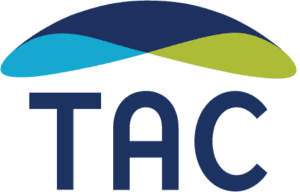Rural Capacity Building Resources
Since 2020, the Technical Assistance Collaborative (TAC), Inc. has provided Rural Capacity Technical Assistance to eligible beneficiaries, including Emergency Preparedness and Young Adult-focused initiatives. For more information, please contact us.

Emergency Preparedness & Disaster Recovery Planning
TAC has offered trainings to help rural communities understand how to prepare and then respond to disasters that impact supportive housing. Content includes how to assess their readiness, housing inventory resources, planning for residents with special needs, and resources to renovate and safeguard housing.
TAC is aiming to identify eligible beneficiaries and conduct organizational assessments of strengths, challenges, and overall capacity and readiness to prepare for and respond to natural disasters that impact rural supportive housing. The assessment results will guide recommendations and strategies to help strengthen organizational areas needed to create and implement successful housing recovery plans.
In addition, TAC is also working to identify eligible beneficiaries to facilitate the documentation of a local affordable housing portfolio, and work with their agency leadership to create a comprehensive disaster response plan to preserve rural supportive housing units.
Click here for more details about assistance
On-Demand Webinars:
Rural Affordable Housing: Preparing for Disaster Response*
Rural Affordable Housing Portfolio: Understanding the Steps to Disaster Recovery*
Young Adult Housing
TAC is preparing to offer trainings with the goal of helping rural communities understand developing housing for youth and young adults experiencing homelessness and housing instability. Content will include development models, financing options, best practices and other information needed to successfully create youth supportive housing.
TAC will also develop organization assessment tools (to be used by eligible entities) to assess their capacity and readiness to engage in youth affordable housing development.
In addition, TAC is aiming to identify eligible beneficiaries and conduct organizational assessments to determine where each agency has strengths and deficits related to capacity and readiness to create rural supportive housing for youth and young adults. TAC will also work this agency leadership to create an action plan to pursue the creation of supportive housing for youth and young adults.
Click here for more details about assistance
On-Demand Webinars:
Rural Affordable Housing: Preparing Your Organization for Young Adult Focused Housing Development*
Rural Affordable Housing-Youth Homelessness Webinar Part One
Eligibility
Eligible Beneficiaries
Rural Capacity Building (RCB) program Eligible Beneficiaries must serve a rural area and work to carry out affordable housing and community development activities in rural areas for the benefit of low- and moderate-income families and persons. This means the RCB beneficiary is physically located within an eligible rural area or, as a result of RCB assistance, will commence or expand service in an eligible rural area.
Eligible Beneficiary (Agencies) include:
Community Housing Development Organizations (CHDOs)
A CDC is a nonprofit organization that:
- Is organized under Federal, State, or local law to engage in community development activities (which may include housing and economic development activities) primarily within an identified geographic area of operation;
- Is governed by a board of directors composed of community residents, business leaders and civic leaders
- Has as its primary purpose the improvement of the physical, economic or social environment of its geographic area of operation by addressing one or more critical problems of the area, with particular attention to the needs of persons of low income
Community Development Corporations (CDCs)
A CDC is a nonprofit organization that:
- Is organized under Federal, State, or local law to engage in community development activities (which may include housing and economic development activities) primarily within an identified geographic area of operation;
- Is governed by a board of directors composed of community residents, business leaders and civic leaders
- Has as its primary purpose the improvement of the physical, economic or social environment of its geographic area of operation by addressing one or more critical problems of the area, with particular attention to the needs of persons of low income
Rural Housing Development Organizations (RHDOs)
An RHDO is a nonprofit organization:
- that is organized to engage in housing and community development activities (which may include housing and economic development activities) focused on the improvement of the physical, economic or social environment of its identified rural geographic area of operation, with particular attention to the needs of persons of low income.
- may be organizations that are working to establish themselves as official CDCs or CHDOs.
- must be organizations that are either currently engaged in housing development as a primary part of their mission, orthat are actively working to build their capacity to complete housing development projects.
Federally Recognized Tribes and their Tribally Designated Housing Entities (TDHEs)
Tribal nations, that are federally recognized, who are located in a rural area or are serving rural areas.
Local Governments
Local government must be located in a rural area, or be serving rural areas within its jurisdiction. State governments and statewide agencies are not considered local governments.
Rural areas are where there are less than 50,000 people living. A mapping tool is posted on HUD’s RCB grant program webpage if you want to review census population by area States. For more information on eligibility, please use HUD’s Rural Beneficiary Mapping Tool.

